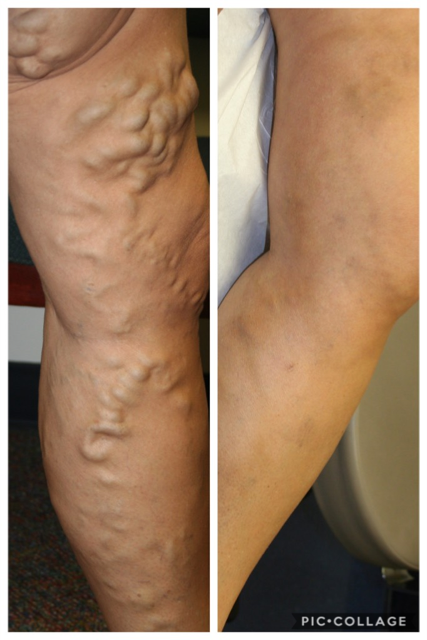With the arrival of summer, you may be examining your legs and wondering if some condition has contributed to the appearance of those varicose veins that make you eye your warm-weather clothing with some trepidation.
The truth is that many varicose veins are caused by a disorder known as superficial venous reflux. Check out these basic facts about superficial venous reflux, including treatment options that can help you say goodbye to this vein disorder and your bulging varicose veins for good.
What Healthy Veins Look Like
Veins have the job of moving blood from the various areas of the body back to the heart. They are equipped with tiny valves that help to keep the blood moving in a uniform direction. Muscle contractions also help to pump the blood through veins, particularly the lower leg muscles that support the veins furthest from the heart that have to work much harder to move blood back up the body.
What Superficial Venous Reflux Looks Like
The problem occurs when those hard-working veins stop working as well as they once did. This is usually due to the valves inside becoming damaged or simply wearing out. The damage can lead to blood pooling or refluxing back into the vessel, resulting in superficial venous reflux. When the disorder is left unchecked, it can progress to the formation of spider veins, varicose veins and other possible complications.
Why Does Superficial Venous Reflux Occur?
Some factors impact why some people develop superficial venous reflux and others don’t. Genetics is probably the biggest one, which means if one or both of your parents have the disorder, you are more likely to as well. Extra stress on the lower leg veins, due to prolonged periods of standing, weight gain, pregnancy or heavy lifting can also play a role. A sedentary lifestyle can contribute to the problem as well since this prevents the calf muscles from giving those lower leg veins the support necessary to function efficiently.
Seeking Effective Treatment for Superficial Venous Reflux.
Spider and varicose veins are not the only symptoms associated with superficial venous insufficiency. The disorder can also lead to tired, aching legs, cramping and a restless feeling in the lower legs at night when you lie down to go to sleep. The condition can even lead to changes to the skin as the increased pressure causes fluid to build up in the surrounding tissue. Early treatment for superficial venous insufficiency prevents these complications and eliminates the unsightly visible veins from your leg at the same time.
At Vein Specialists of the Carolinas, we offer different treatment options for superficial venous insufficiency so that we can tailor each procedure to the unique needs of our patients. The right treatment for you will depend on the size and location of your veins, as well as other factors that Dr. Draughn or Dr. Putterman will discuss with you before your vein procedure.
Treatment choices include radiofrequency ablation that close damaged veins so that they can be eliminated by the body. We can also remove large varicose veins from the leg in small sections, using special tools that involve minimal discomfort and leave almost no visible scarring behind. Smaller spider veins can be treated with a proven injectable treatment known as sclerotherapy.


